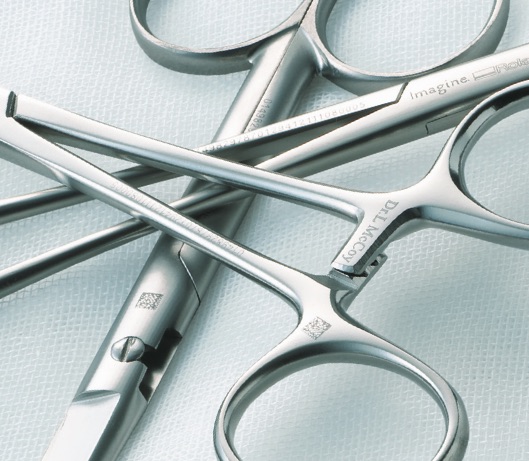Direct Part Marking for Medical Devices
 Long used in the automotive, aircraft, and electronics industries, direct part marking (DPM) now plays a significant role in medical device manufacturing, helping manufacturers comply with stricter supply chain regulations. Faced with the necessity of tracking and tracing surgical instruments and other tools to ensure patient safety, manufacturers turned to DPM.
Long used in the automotive, aircraft, and electronics industries, direct part marking (DPM) now plays a significant role in medical device manufacturing, helping manufacturers comply with stricter supply chain regulations. Faced with the necessity of tracking and tracing surgical instruments and other tools to ensure patient safety, manufacturers turned to DPM.
And with the looming shadow of the Unique Device Identification (UDI) System, as mandated by the Food and Drug Administration in the United States, it's becoming more and more important that manufacturers and government agencies have the ability to reliably and consistently identify a wide range of medical devices.
Signed into law in 2007 and still in the implementation process, this system promises to help identify potentially counterfeit products, improve the national recall process for devices with defects, and help medical staff differentiate between similarly-looking devices that serve different functions.
Applying a 2D bar code directly to the surface of a medical device means that quite a large amount of information can be placed in a small area. And depending on the imprinting technology, the direct part marking is readable for the entire life of the device.
That's why more and more manufacturers are considering impact printers for their direct part marking needs. Here are two examples of these precision imprinting tools.
Roland's Micro-Percussion DPM Technology
Designed with medical device marking in mind, the MPX-90M impact printer easily imprints GS1 DataMatrix bar codes, containing as many as 26 digits, in an area as small as a square millimeter. The compact device uses a diamond-tipped stylus with the ability to score hard metals like titanium and stainless steel.
The device can also print numbers, logos, photos, QR codes, text, symbols, and other graphics just as precisely as the DataMatrix bar codes. And the included software quickly converts numerical data to the proper 2D bar code.
One DPM Machine For All Kinds of Materials
Another direct part marking device for medical manufacturers is the XF510m from Technifor. Using a carbide-tipped stylus, this marking solution can be used on a range of materials. For many metals, the depth of the mark is 0.2mm, ensuring readability for a long time, regardless of the service environment.
And since speed is often a consideration in the manufacturing process, the marking machine can etch a DataMatrix code in as little as four (4) seconds.
As the medical device marketplace pushes for greater traceability for their products, manufacturers like Roland and Technifor continue improving the markers that make that happen.
See related articles:
Direct Part Marking: An Evolving Technology For Automated Traceability
QR Codes Drive Real Time Customer Feedback
Selection of Ten Articles on Barcodes and RFID In Manufacturing
